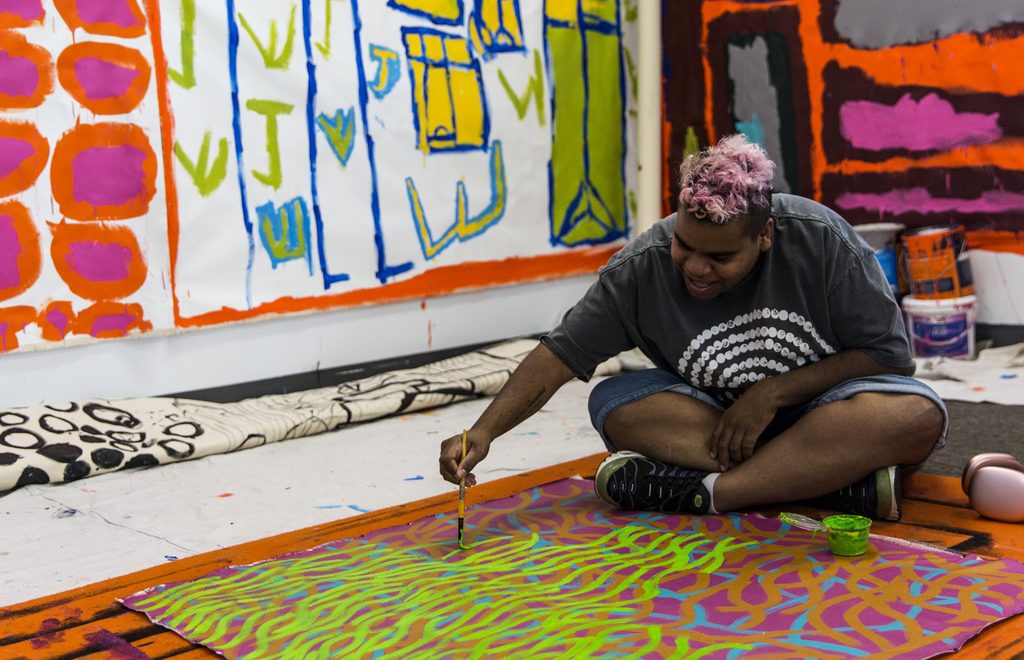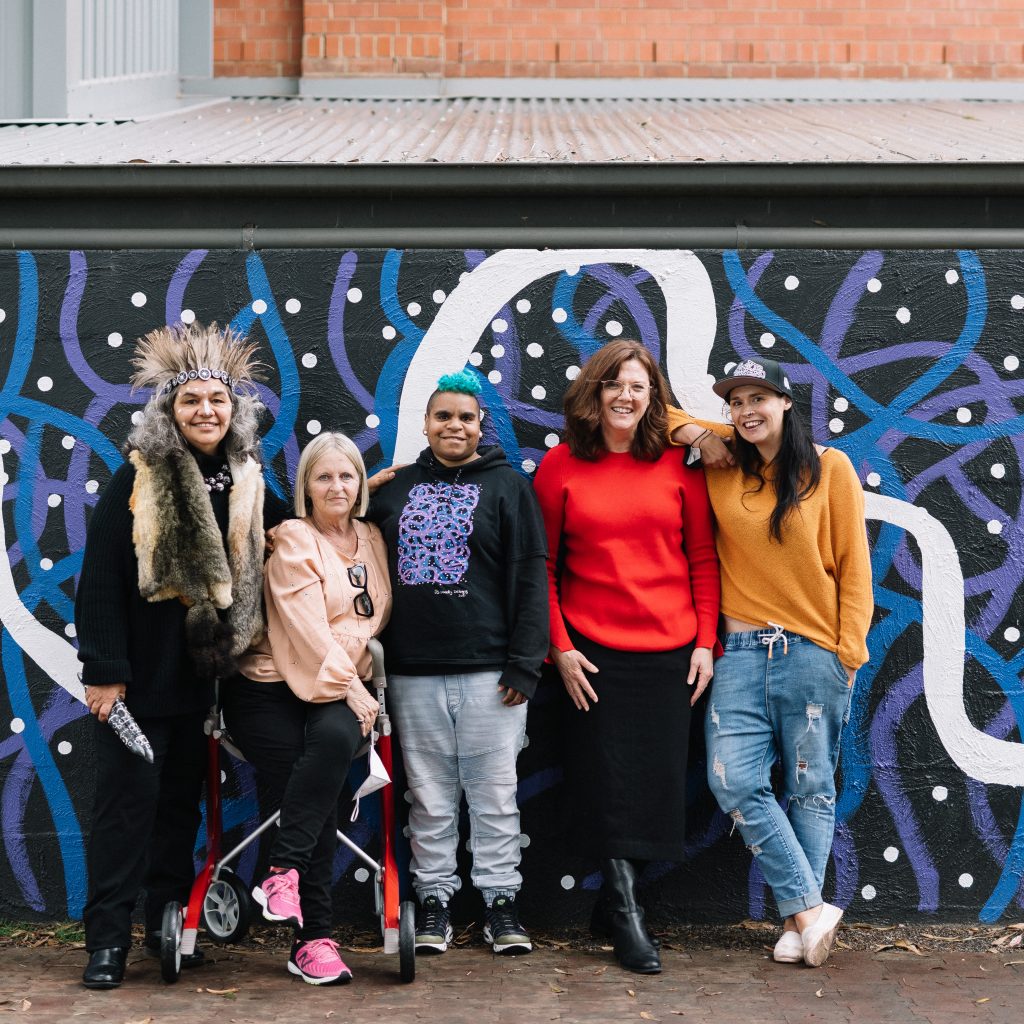Reconciliation at Tutti
In May 2025, Tutti Arts published it’s first Reconciliation Action Plan (RAP).
We recognise and acknowledge that the impacts of colonisation are systemic and ongoing, and that we want to be part of a national solution to stop the systemic violence, racism, and hurt that affects the lives of Aboriginal and Torres Strait Islander peoples. We respect the primacy of First Nations artistic practice on the lands we live, create, dream and work. We strive to create a culturally safe environment and remove barriers for First Nations artists in much the same way we’ve worked to remove barriers for learning disabled and neurodivergent artists.
Our Board, Senior Management, Staff and Artists embrace the Social Model of Disability. This ensures that we work towards removing all barriers so that Tutti artists are provided with meaningful opportunities to achieve their full potential. The bedrock of this is equality (being invited to the table) and equity (having agency), ensuring that there is a level playing field across all aspects of our organisation. As such our organisation is artist (client) centred, and our newly published RAP is modelled on these principles.
We acknowledge that we have an underrepresentation of First Nations people at all levels of our organisation and will address this through our reconciliation journey. We want to embrace a culturally diverse workplace where everyone can thrive. If we get First Nations access, inclusion and agency right – we get it right for everyone.

A challenge for Tutti has been ongoing and sustained connections with First Nations peoples. Whilst there are First
Nations artists at Tutti, we also know that the intersectional experiences of colonialism, racism, and ableism can lead to
the marginalisation of First Nations participants.
“The fact remains that there are at least 60,000 First Nations Peoples who are potentially eligible for the scheme…there are
major barriers for many First Nations Peoples with disabilities in accessing the NDIS.” – Damian Griffis, CEO First Peoples Disability Network.
We champion First Nations artists that we work with to ensure that they are connected to other Aboriginal and Torres Strait
Islander artists, to their art and culture but currently we have no First Nations people permanently on staff. Tutti is committed to strategically take meaningful action to advance reconciliation and has begun its reconciliation journey.
Our first Reconciliation Action Plan (Reflect) has helped us develop relationships, decide on our vision for Reconciliation and explore our sphere of influence. We want to continue to build on and formalise the relationships we have with First Nations peoples in order to walk side-by-side and contribute to reconciliation, equity, equality and justice for all.
Tutti is committed to being an organisation which reflects our society.

